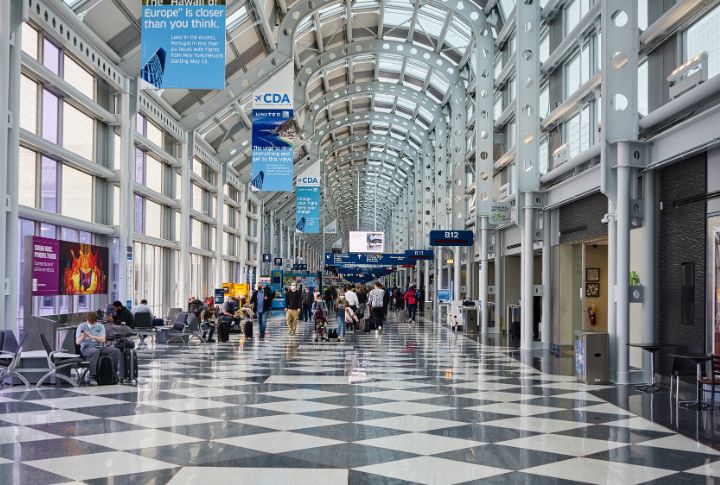
The busiest airports, ports, and train stations in the U.S. weren’t always the modern hubs we know today. Many started as military bases, bustling trade centers, or elegant landmarks of a past era. Over time, they’ve adapted to meet new demands, shaping the way people and goods move. Explore how these vital hubs have transformed into today’s transportation powerhouses.
Chicago O’Hare International Airport (Then)
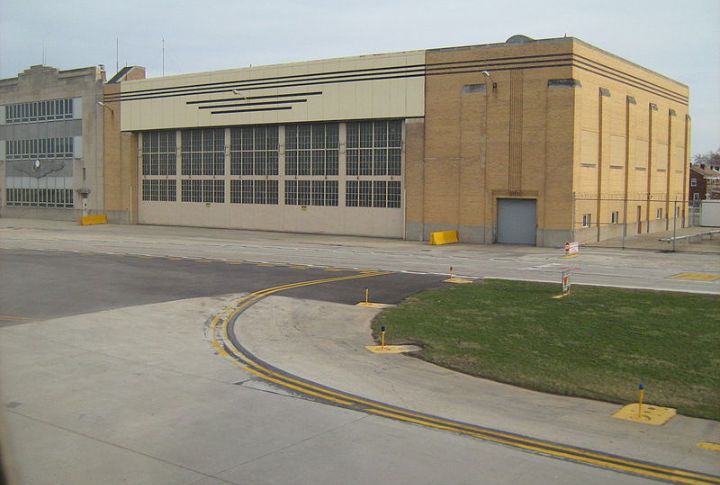
Born from the demands of World War II, Chicago O’Hare International Airport started as Orchard Field, a Douglas C-54 Skymaster military aircraft factory site. By 1949, it was renamed after war hero Edward O’Hare. Its early runways, designed for military use, became the foundation for a booming post-war aviation industry.
Chicago O’Hare International Airport (Now)
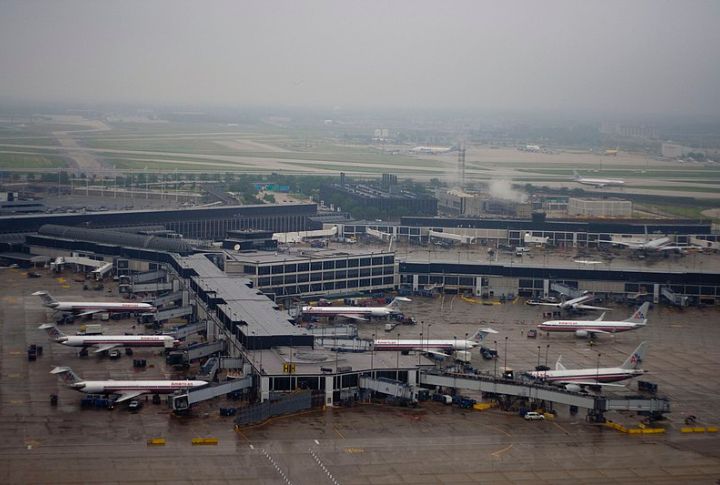
Spanning approximately 11.9 square miles, O’Hare processes over 80 million passengers annually. The airport pioneered parallel runways to ease congestion, a model adopted worldwide. With a futuristic air train in development and new global routes added yearly, O’Hare continues to lead in aviation.
Port Of San Francisco (Then)
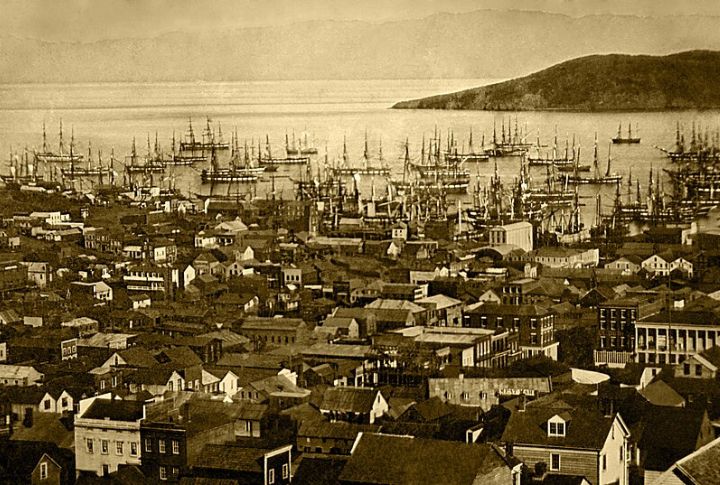
In the frenzy of the 1849 Gold Rush, the Port of San Francisco became the busiest on the West Coast. Hundreds of abandoned ships were repurposed into warehouses and hotels. By the early 20th century, its piers handled the largest tonnage of cargo on the Pacific, linking the U.S. to Asian markets.
Port Of San Francisco (Now)
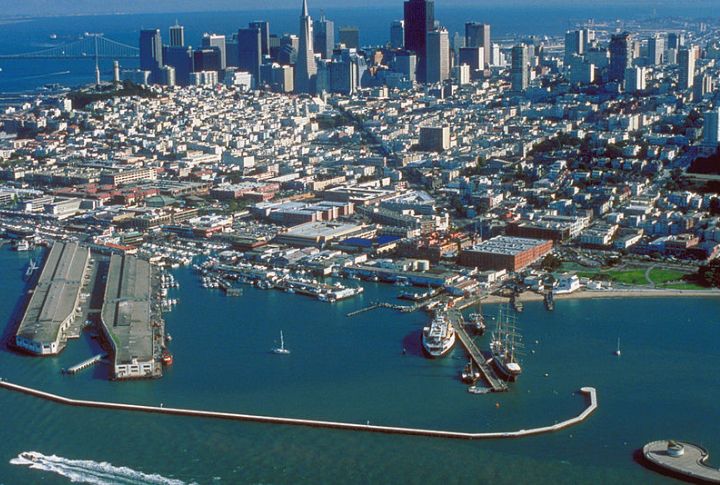
While its commercial shipping influence has declined, the port lives on as a cultural and tourism center. The waterfront redevelopment turned piers into vibrant attractions like the Exploratorium. Ferry services and cruise terminals keep maritime activity alive, a touch of history with modern-day urban transformation.
Union Station, Washington, D.C. (Then)

The station served as a presidential arrival point that hosted inaugural parades and wartime troop deployments. When Union Station opened in 1907, it was the largest train station in the world. More than a transportation hub, it was designed to impress visitors to the capital with its Beaux-Arts splendor.
Union Station, Washington, D.C. (Now)
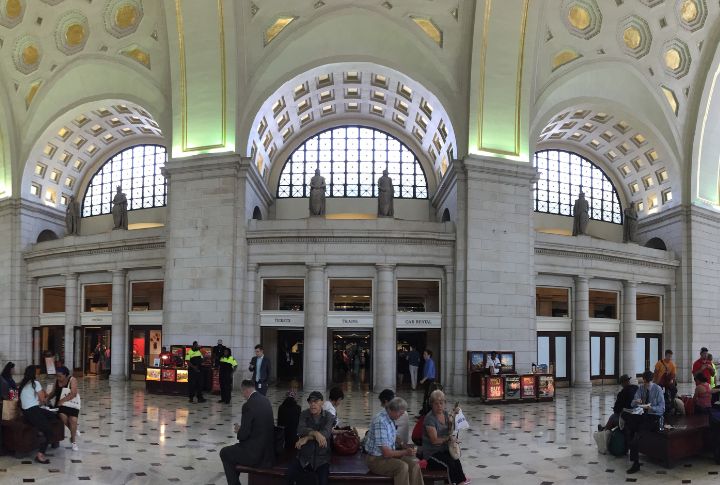
Currently, it is undergoing an estimated $8–$10 billion revitalization; Union Station is to become a multimodal transit hub with high-speed rail integration. Its shopping and dining options are expected to draw more visitors. Once threatened with demolition, the historic main hall is now restored and bustling with travelers.
Miami International Airport (Then)
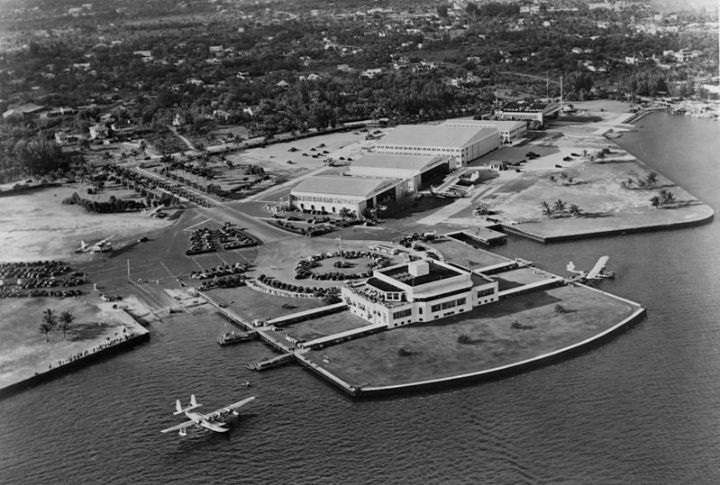
Miami’s first international flights took off in the 1920s, but the airport’s golden era began in the 1950s when it became Pan Am’s headquarters. As the launchpad for intercontinental air travel, MIA pioneered routes to South America and became the “Gateway to the Americas.”
Miami International Airport (Now)
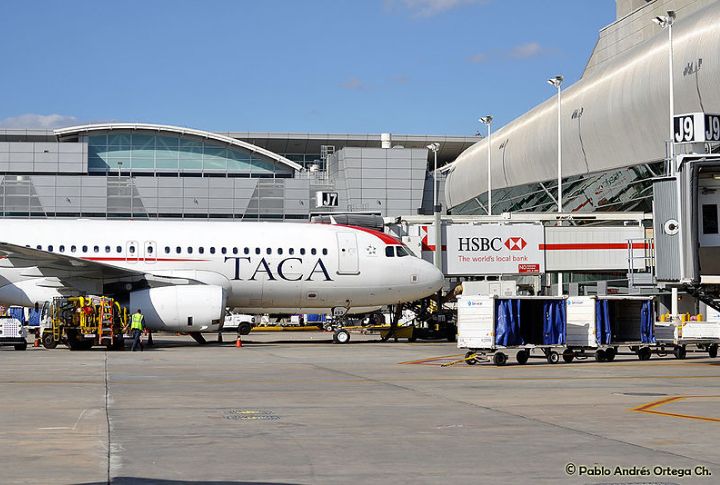
With its expanding role as a bridge between continents, Miami is now a leader in international aviation connectivity. MIA handles over 2 million tons of cargo annually and always ranks among the top 10 busiest freight hubs in the U.S. The newly added biometric facial recognition system speeds up security checks.
Port Of New Orleans (Then)

The Port of New Orleans played a memorable role in the global cotton and sugar trade and served as a key military shipping center during both wars. Established in 1718, Its strategic position along the Mississippi River made it the second busiest U.S. port by the 19th century.
Port Of New Orleans (Now)
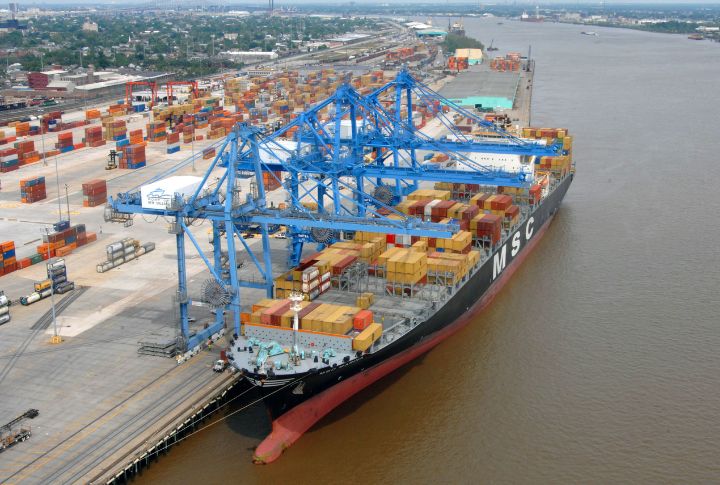
Port NOLA is a major tourism driver, handling over 1.2 million cruise passengers a year. Recent expansions include a $100 million terminal upgrade that improved cargo transport efficiency. The city’s historic French Quarter remains deeply connected to its maritime legacy, with old-world charm amid modern trade upheaval.
Grand Central Terminal (Then)
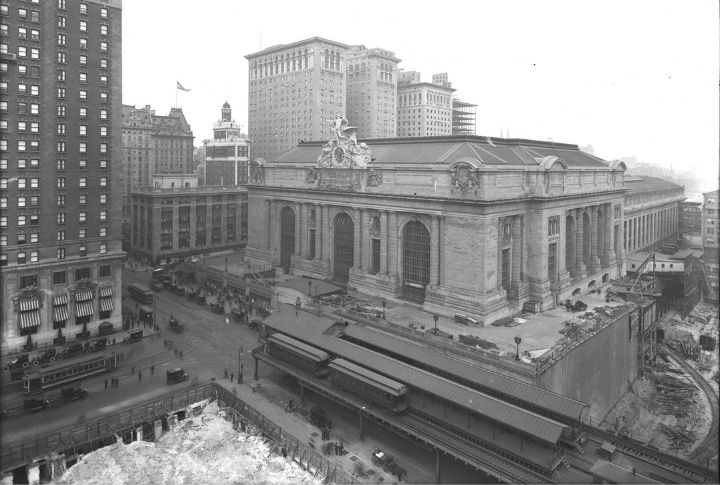
Opening in 1913, Grand Central Terminal was designed to personify the golden age of rail travel. With 44 platforms, it was the busiest station in the world. In the 1970s, a Supreme Court ruling protected it from demolition to enable its preservation as an architectural and cultural treasure.
Grand Central Terminal (Now)
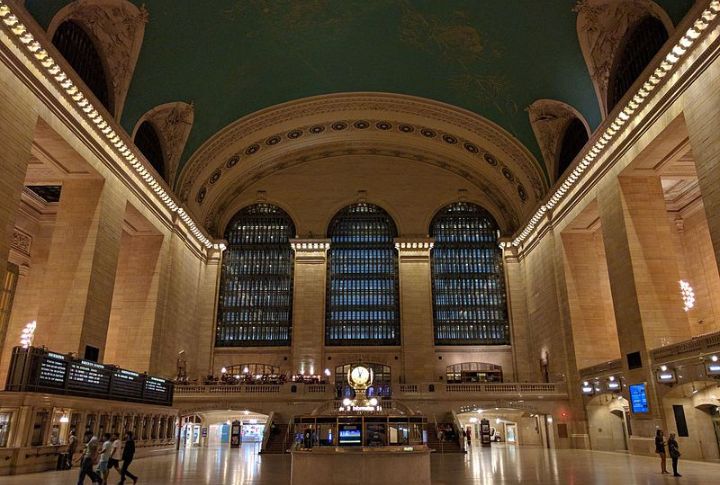
Now, Grand Central serves over 750,000 daily commuters and is more than a station—it’s an urban icon. The $11 billion East Side Access project will bring Long Island Rail Road trains directly to its platforms. Its Whispering Gallery and astronomical ceiling continue to fascinate visitors from around the world.
Los Angeles International Airport (Then)
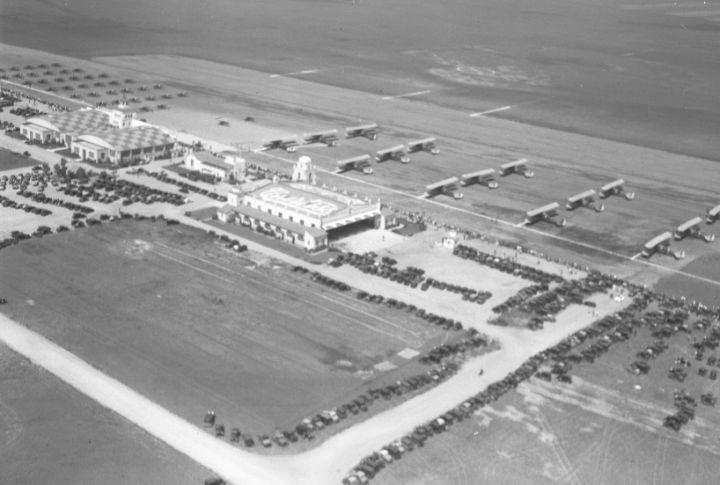
When LAX was established in 1928 as Mines Field, it had no passenger terminals. Military operations dominated its early years until commercial airlines arrived in the 1940s. The iconic Theme Building, which opened in 1961, introduced a futuristic aesthetic that set the tone for LAX’s Jet Age expansion at the time.
Los Angeles International Airport (Now)
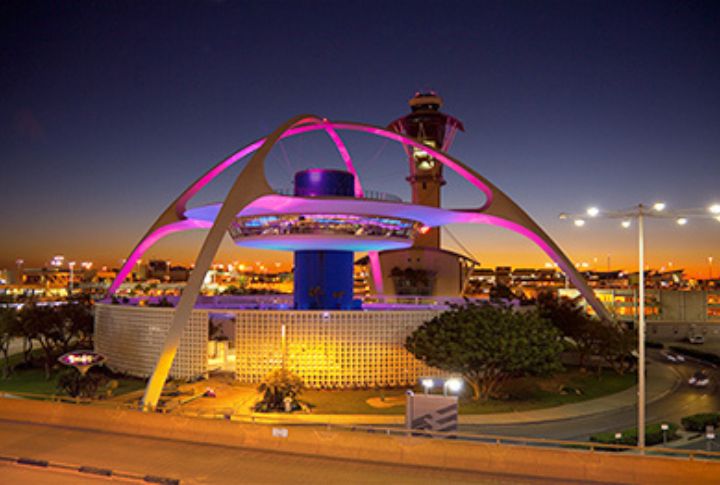
The role of LAX as a primary U.S. gateway to Asia and the Pacific is vital for global air travel. Now processing over 88 million passengers annually, it is undergoing a $14 billion modernization. The Automated People Mover, expected in 2026, will reduce congestion and improve transit connectivity.
Port Of New York And New Jersey (Then)
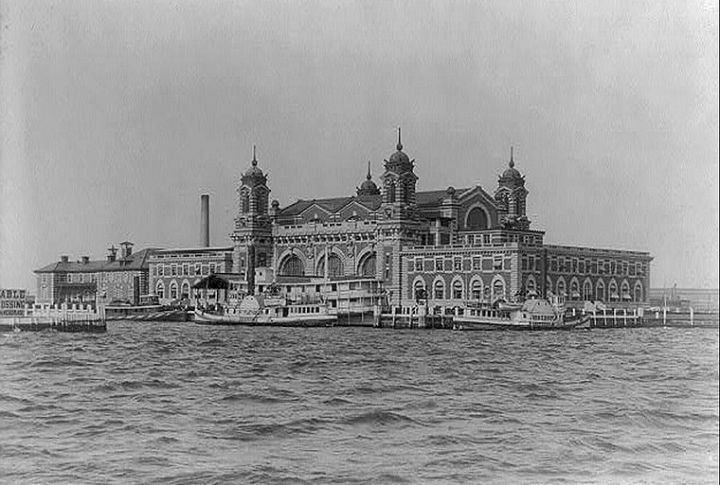
Through the 19th and early 20th centuries, this port handled a large volume of immigrants and cargo. Ellis Island is known to have processed over 12 million arrivals, making it the primary entry point into America in its early years. By 1921, it was the busiest seaport in the Western Hemisphere.
Port Of New York And New Jersey (Now)
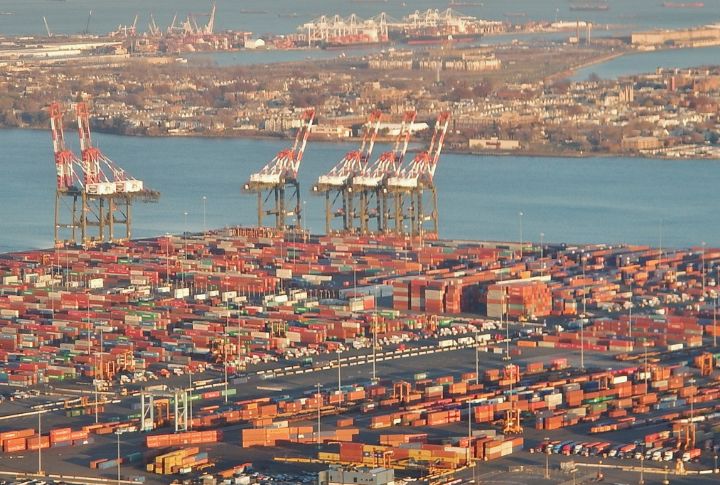
Today, the port processes more than 7.5 million cargo containers annually, according to recent data. Autonomous cranes and AI-driven logistics streamline operations. Environmental sustainability efforts, like shore power connections for docked ships, make it a leader in green shipping practices.
Chicago Union Station (Then)
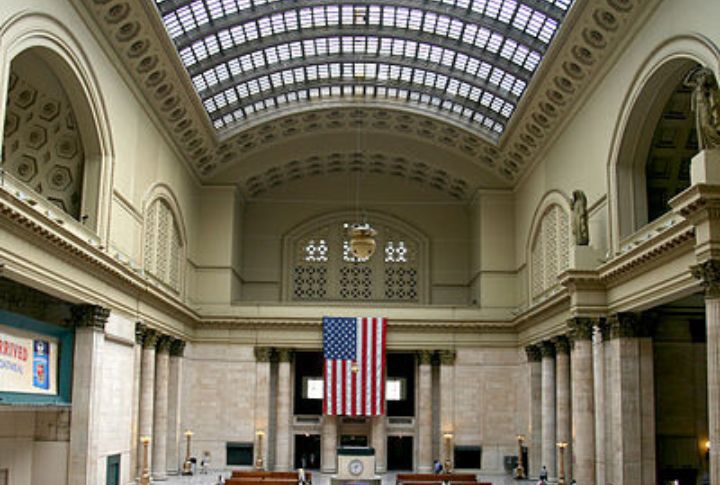
The Chicago Union Station played a pivotal role in troop movements and supplies during both world wars. Opened in 1925, it quickly became the linchpin of U.S. rail networks. Its grand hall, inspired by Roman architecture, saw millions of travelers pass through. The station cost $75 million to construct at the time.
Chicago Union Station (Now)
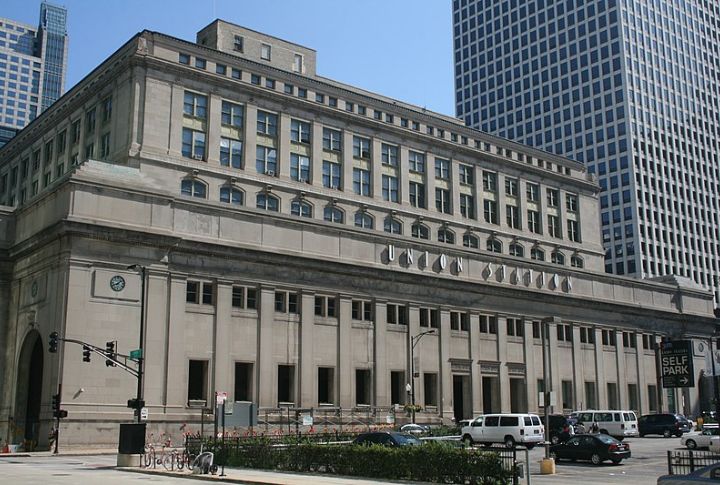
Amtrak’s $418 million renovation plan will revitalize Union Station with expanded concourses and high-speed rail capabilities. Historic skylights will be restored to bring natural light back to its grand hall. With potential future bullet train connections, Chicago’s rail hub is poised for another transportation revolution.
LaGuardia Airport (Then)
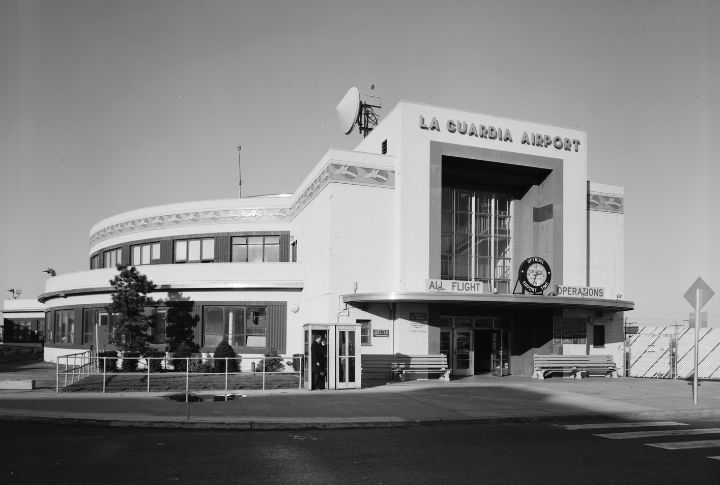
LaGuardia opened in 1939 as the world’s most advanced airport. Built with an elegant Art Deco terminal, it set new aviation standards. However, by the late 20th century, it became synonymous with congestion and outdated infrastructure, earning a reputation as one of America’s worst airports.
LaGuardia Airport (Now)
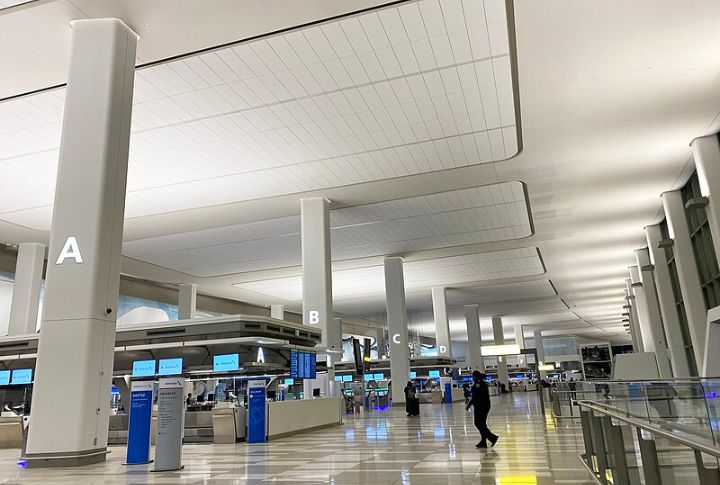
A $8 billion overhaul has transformed LaGuardia into a world-class facility. New terminals feature innovative gate designs, improved traffic flow, and enhanced passenger experiences. Once considered a symbol of inefficiency, the airport’s rebirth as a modern travel hub stands as a major comeback success in American aviation redevelopment.
